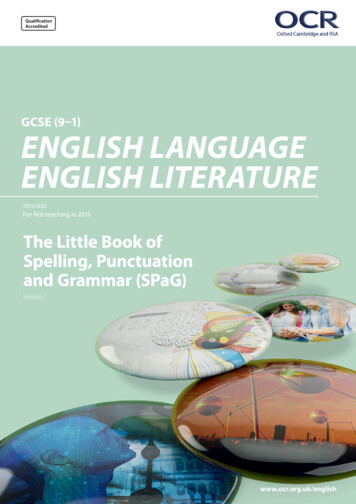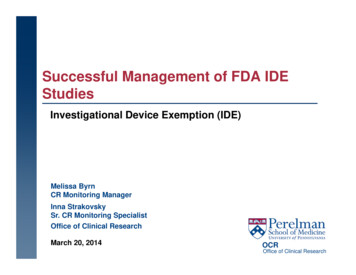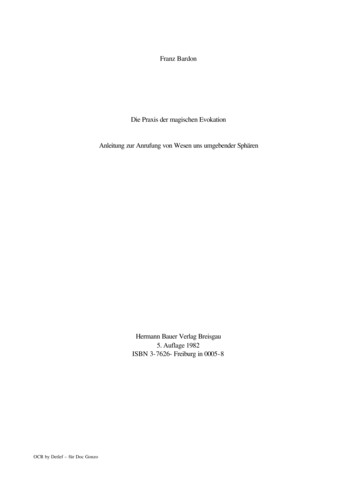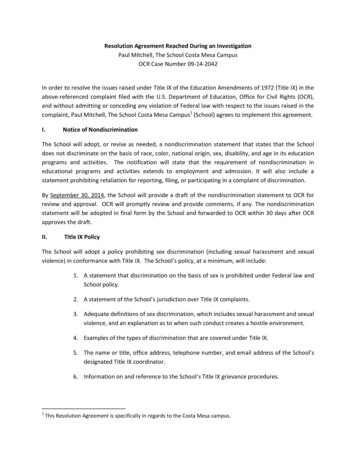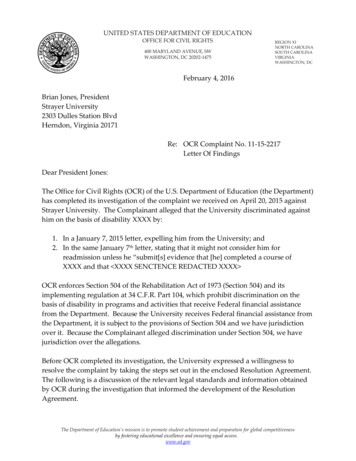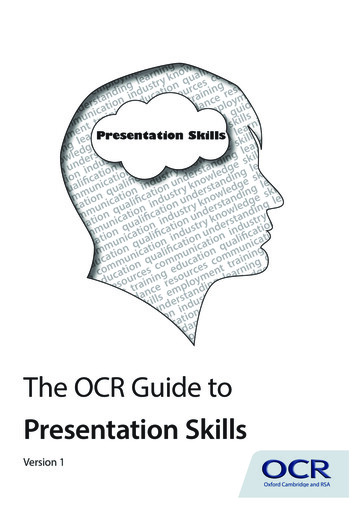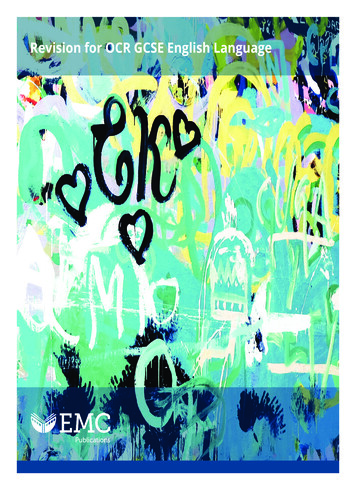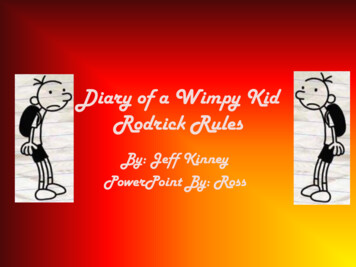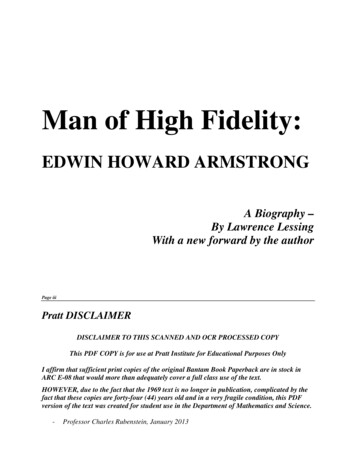
Transcription
gdine nnactersuidan icatiodnu g g mun kills tion ng ustry tionisnrni om e uca rn ind ucalearces cwledgg ed g leation g ed nceu kno inin ndin nica ainin uida ge n cationosre stry t tra rsta mu t tr g g led catio uni ionm atu en de om en in ow ifigindloym n un ces c loym learnry kn quals comeducrces aininort nep gu trpiemlificat resouls em ndin induscatio sourcaining reso ent e mentealcreu em c yquaance e ski derstationg ednce r ent tidanc ployuidanmplouidan ntdcngeguiwled ion u munitraininguidaploymg guills emg gkills eing gloymancenintoinkkn lificas com ent ning ls emlearn ge s lear dge s learn emp guidmentceeare skil ing wled ding owle ding skillsrning ploy idan ntquaource ploymlgem udnnreslls emandin ledgrstanry knoersta try knersta ledge g leaills eing g loym ancetnwsdtiksk derst kno unde dus n undindu n undknow andi ge s learn emp gui ymenun ustryation ion incatio tion catio stry derstwledding skillsrningmploindalific nicat ualifiunicaualifi induon uny knorstan dge g leaills eing skillsqummu on q mm on q ationficati ustr nde owlendin e sk earn dge dingco ucati es coucati unic uali n indtion utry knersta ledging l owlerstanedsourcg ed ommion qcatiolifica ndus und knowtand ry knundeustryre inin ces c ucat uni qua on i ation stry ders dust tion ind n urcetrasour g edcommtion icati alific indu n un n inlifica tion catio reso menre ainin ces duca mun qu tion catioicatio qua unica edu nce ploytr sour g e com ation nica alifi un tion mm ing uidas em ingre aininrces duc mu n qu ommuca s co trainng g skill and ontr sou ng e com atio es c g ed urce ent arni ge erst icatire aini rces educ ourc inin eso oym g le wled und un nttr sou ng res tra ce r mpl din kno tion omm mere aini nce ent idan ls e rstan try ifica es c ploytr uida oym gu skil de dus ual urc em tion anceg mpl ing ge n un n in n q reso kills ifica uide arn led atio atio atio ce e s ual g g onle now lific nic duc dan edg n q rnin atik ua mu g e gui wl tio lea nic geq om nin g kno uca g mu ledc rai rnin try ed din om owt lea us ing tan s c knindtrain ndersourceustryskillsu res indSkills GuideSPaGThe OCR Guide toSpelling, Punctuationand GrammarVersion 1
n t tr on i gui uali ski mm g le cati owl nce ificat ills sn cati ing n q dge co din edu kn ida ual sk urceem ni arn atio wle ces stan g stry guq dge eso ionunnrem ng l duc kno sou nder raini indu ning atio wle ce r ficat lls sdi ing eustry ce reon u nt t ion lear educy kno idan uali e ski ourceainn ind idanificatioyme nicatding ning dustr g gution qledge res cationlsio g guqual empl mmurstan trai n in arnin uca knowdanc alifi skilnintion kills es counde menticationg leng edstry gui on quedgenoliiguiieascyuc dge sour ation plo mun tand train indarnin ucatknowdanc ucat rym om ers nt tion le ed ryditecesreelufiuiw nce ual ills s c nd me ica ing ing ust g g ing inda n q e sk urce on u loy un and rain ind rnin rain on dingi mp mm rst t t on lea t t ati anotogisadta wle e re lific ls e co de en cati ng en nic ersttno danc qua skilurces on un loym uni andi loymmmu und skillsneppeiitmgnonmtosegucnorg cati led res ifica s em com de s em es atio edg rni ploydu knowance qual skillurces on un skill sourcualificnowl g leas em cery guid tion edge reso ficati edgece re n q try k ndin skill idan entngeducanowl nce quali nowl idanucatioindusderstaedge g gu loymg try k guidation stry k g gug ed tion n un nowl arnin empgsud ning duca indu arninaininunica catiostry k ng le skills arninedgee t tr m alifi du ndi gele onerllawge in ati ing en om qu in sta led ing kno ionain unic tandloym ces ction tion der now tand stry ificats p ur ca ica un y k ers du ual esrmem nd em eso du un tion str nd in q urc lsn uskillsnce r ing e ommlifica indu ion uation ation reso skilces communication industry knowledge skills employment training education qualification understanding learning guidance resources communince resources communication industry knowledge skills employment training education qualification understanding learning guidance resourcesng guidance resources communication industry knowledge skills employment training education qualification understanding learning guidance rstanding learning guidance resources communication industry knowledge skills employment training education qualification understanding learncation understanding learning guidance resources communication industry knowledge skills employment training education qualification understion qualification understanding learning guidance resources communication industry knowledge skills employment training education qualificatg education qualification understanding learning guidance resources communication industry knowledge skills employment training educationyment training education qualification understanding learning guidance resources communication industry knowledge skills employment traininedge skills employment training education qualification understanding learning guidance resources communication industry knowledge skills emorder to helpyou withthe increasedfocus on spelling,ry knowledge skills employment training education qualification ionindustry knowledgeunication industry knowledge skills employment training education sindpunctuation and grammar (SPaG) in assessment, communicationOCR hasces communication industry knowledge skills employment training education resourcescommunishort guideto help you improvewrittenresourcesnce resources communication industry knowledge skills employment training education English. Thisguide providesyou withsome basic learningrulesng guidance resources communication industry knowledge skills employment e rstanding learning guidance resources communication industry knowledge nderstandinglearnskills related to spelling, punctuation and grammar.cation understanding learning guidance resources communication industry knowledge skills employment training education qualification undersWe suggestthat youskillsmakeemploymentuse of the linksto the educationexercises qualificattion qualification understanding learning guidance resources communication industryknowledgetrainingg education qualification understanding learning guidance resources providedindustryto practiseand improveknowledgein ordereducationtoyment training education qualification understanding learning guidance ymenttraininmakeyour writingmorecommunicationaccurate and skilfulin a wholerange skillsedge skills employment training education qualification understanding ts.guidanceOther skillsguides areavailable at www.ocr.org.uk.ry knowledge skills employment training education qualification try knowledgeunication industry knowledge skills employment training education qualification understanding learning guidance resources communication indces communication industry knowledge skills employment training education qualification understanding learning guidance resources communince resources communication industry knowledge skills employment training education qualification understanding learning guidance resourcesng guidance resources communication industry knowledge skills employment training education qualification understanding learning guidance rstanding learning guidance resources communication industry knowledge skills employment training education qualification understanding learncation understanding learning guidance resources communication industry knowledge skills employment training education qualification understion qualification understanding learning guidance resources communication industry knowledge skills employment training education qualificatg education qualification understanding learning guidance resources communication industry knowledge skills employment training educationyment training education qualification understanding learning guidance resources communication industry knowledge skills employment traininedge skills employment training education qualification understanding learning guidance resources communication industry knowledge skills emry knowledge skills employment training education qualification understanding learning guidance resources communication industry knowledgeunication industry knowledge skills employment training education qualification understanding learning guidance resources communication indces communication industry knowledge skills employment training education qualification understanding learning guidance resources communince resources communication industry knowledge skills employment training education qualification understanding learning guidance resourcesstanding learning guidance resources communication industry knowledge skills employment training education qualification understanding learncation understanding learning guidance resources communication industry knowledge skills employment training education qualification undersg education qualification understanding learning guidance resources communication industry knowledge skills employment training educationemployment training education qualification understanding learning guidance resources communication industry knowledge skills employment try knowledge skills employment training education qualification understanding learning guidance resources communication industry knowledgeces communication industry knowledge skills employment training education qualification understanding learning guidance resources communing guidance resources communication industry knowledge skills employment training education qualification understanding learning guidance rcation understanding learning guidance resources communication industry knowledge skills employment training education qualification undersg education qualification understanding learning guidance resources communication industry knowledge skills employment training educationedge skills employment training education qualification understanding learning guidance resources communication industry knowledge skills emunication industry knowledge skills employment training education qualification understanding learning guidance resources communication indng guidance resources communication industry knowledge skills employment training education qualification understanding learning guidance rfication understanding learning guidance resources communication industry knowledge skills employment training education qualification undersloyment training education qualification understanding learning guidance resources communication industry knowledge skills employment trainmmunication industry knowledge skills employment training education qualification understanding learning guidance resources communication
4Spelling, Punctuation and GrammarContentsUsing this guidePage 5Note for teachersPage 6IntroductionPage 8ProofreadingPage 10Using a thesaurusPage 11Sentence structurePage 12Punctuation marksCommon mistakesSpelling, Punctuation and GrammarUsing this guideWhat is this guide designed to do? Appendix 2: HomophonesHelp you understand why SPaG isimportant. Appendix 1: LinksGive you some tips on certain areas ofSPaG such as:--proofreading--using a thesaurusPage 13--sentence structure--verbsPage 16--punctuation marks--apostrophes--bullets and lists.Page 21Page 23Appendix 3: HomographsPage 27Appendix 4: Prefixes and suffixesPage 28Appendix 5: Spelling pluralsPage 325 Give advice on common mistakes such as:--using the wrong word--homophones--misuse of apostrophes--subject/verb agreement--comma splicing.Offer you some exercises and links toThis skills guide also contains anumber of appendices listing furtherresources: interactive exercises andlinks to websites. denotes a link to a website in theappendix giving further information.useful websites where you can find moreinformation and practise your skills.This document will print with reduced colours.www.ocr.org.ukwww.ocr.org.uk
6Spelling, Punctuation and GrammarNote for teachersassessed in all units and is integrated in themarking criteria. In the subjects listed above,marks available for SPaG, will be detailed onJ620 Religious Studies A (short course)J621 Religious Studies B (short course)both the front cover of the exam paper and inAll of the external assessment units will carrythe question where applicable.additional marks for spelling, punctuationand grammar. The questions willJ382 Geography Aunit A731, questions markedas indicated in the rubric willcarry additional marks forand in other qualifications, candidates areexpected to: ensure that text is legible and that spelling,punctuation and grammar are accurate sothat meaning is clear present information in a form that suits itspurpose use an appropriate style of writingand, where applicable, specialistterminology.be marked as indicated in theRubricIn the external assessment for7The quality of written communication isFrom 2013, GCSE examinations for English Literature, Geography,History (including Ancient History) and Religious Studies will allocatemarks to reflect the quality of spelling, punctuation and grammar(SPaG).The assessment of SPaG, and the number ofSpelling, Punctuation and GrammarThe explanatoryrubric.information given oneach exam paper.spelling, punctuation andgrammar.J085 Geography B (short course)In the external assessment for unit A772,questions marked as indicated in the rubricJ151 Ancient History (short course)J415 History A: Schools History ProjectJ117 History B: Modern World (shortcourse)will carry additional marks for spelling,All of the external assessment units will carrypunctuation and grammar.additional marks for spelling, punctuation andgrammar. The questions will be marked asJ385 Geography BIn the external assessment for unit B563,questions marked as indicated in the rubricindicated in the rubric.J360 English Literaturewill carry additional marks for spelling,Unit A662 will carry additional marks forpunctuation and grammar.spelling, punctuation and grammar. Thequestions will be marked as indicated in therubric.www.ocr.org.ukwww.ocr.org.uk
8Spelling, Punctuation and GrammarIntroductionSpelling, Punctuation and GrammarAlmost all employers view effective writtenSo improving your understanding ofcommunication as an important skill forspelling, punctuation and grammar is a wiseemployability. It is also a skill which manyinvestment of your time.Why do you need to improve your understanding of spelling,punctuation and grammar?potential candidates lack. So, improving yourKnowledge of spelling, punctuationyour choice. Failure to demonstrate goodand grammar will help you to properlyquality written communication may imply aarrange words in sentences and add thecorrect punctuation. This will allow you tocommunicate effectively with others.In the short term, the ability to spell,punctuate and produce grammaticallycorrect sentences in assessment is important.9understanding of spelling, punctuation andgrammar could help you into the career oflack of professionalism – or that you don’t payText speak is great forattention to detail.social media but formallanguage is needed in youracademic life, when applyingfor a job, and in manyworkplaces.As your career progresses, the amount ofwritten communication that you produce islikely to increase. Clearly-written,grammatically-correct and properly-However, it is also a life-long skill that is wellpunctuated letters and reports and otherworth practising and improving.written communication will be importantfor carrying out your role professionally andAdditional marks are allocated to some GCSEsthat they are useful, relying on themto reflect the quality of spelling, punctuationcompletely is not sensible and can lead toand grammar. It’s always worth aiming for theconfusion or embarrassing mistakes.effectively.best standard of writing in any assessment asit helps to convey your meaning.At college or university, poor spelling,punctuation and grammar will cause youSpelling and grammar checkers on computersto lose marks in essays. Good punctuationare not always correct! They sometimesand grammar will not only improve yoursuggest changing words that are perfectlymarks, but, used skilfully, can make your workcorrect and often miss glaring errors. Unlikeeasier to read and the points you make moreyou, they are not concerned with the meaningpersuasive and engaging.of the sentence and are simply following apredefined set of rules. While there is no doubtwww.ocr.org.ukWhen businesses fail to takecare with accuracy, they mayappear to be unprofessional tothe public and customers. Someinternet businesses say thatrevenue is being lost due topoor spelling.www.ocr.org.uk
10Spelling, Punctuation and GrammarProofreadingProofreading is important for businessescompleted work, thoroughly you will usuallybecause it ensures that communication withspot and be able to correct most mistakes inthe public, suppliers and customers is clear,spelling, punctuation and grammar. It is alsoaccurate and professional. Many businesses –an opportunity to ensure that what you wantincluding OCR – employ proofreaders for thisto say is clear to understand. This is known asvery purpose.If you don’t already do so, get into the habitof having a good dictionary and thesaurus byyour side – or use an online version – whenyou are drafting your work. Try restructuring asentence to see if a few changes make it easier11Using a thesaurusIf you re-read your draft, and then yourproofreading.Spelling, Punctuation and GrammarA thesaurus groups together words that are similar in meaning(synonyms) and can help you to find a new word to replace oneyou already know.This can avoid repeating words in a sentenceas well as beginning successive sentences orparagraphs with identical words. It is, however,important to ensure that the alternative wordis appropriate. English has 90 spellingA thesaurus also lists words with the oppositerules and many of them haveexceptions too. A summarymeaning (antonyms).of some of the main spellingfor the reader to understand. Or, if you arerules can be found in theunsure of the spelling of a word, use a differentappendices.one.If working in a computerprogram such as Word, rightclicking on a word will offera menu from which you canselect a list of synonyms andaccess other thesaurus anddictionary tools.www.ocr.org.ukwww.ocr.org.uk
12Spelling, Punctuation and GrammarSpelling, Punctuation and Grammar13Sentence structurePunctuation marksIt is important to write complete sentences that are correctlypunctuated.When speaking, we use many methods to help listeners understandus.A complete sentence always has a nounWhen we speak, we can make ourselves better(name of something) and a verb (action word).understood by changing the tone of our voice,It also expresses a complete idea and makespause, stop, use hand gestures and facialsense standing alone. expressions. In writing, punctuation marksare an equivalent method for emphasising orTry testing your sentences; if you take awayclarifying what we mean.all of the surrounding text, does it still makesense on its own?Text written without any punctuation marksThe first letter of asentence after a fullstop, question mark andexclamation mark isalways a capital letter.would be difficult to understand. SometimesMany words can be either a noun or a verb.information with incorrect punctuationUsing the word ‘plan’ as an example, if thechanges the meaning from what wasword makes sense when you put ‘a’ or ‘the’ inintended. front, it is a noun:I have a plan. (noun)Sentences always begin with a capital letter andI have the plan. (noun)end in either:If the word makes sense when you put‘to’ in front, it is a verb: a full stop – to end a statement a question mark – to let the reader know aquestion is being askedI plan my essays. (verb)To plan my essays. (verb) an exclamation mark – to indicate a thoughtwith emotionThe tense of a verb can change to show whenthe action took place. The verb ending maythen change, for example:I planned my essay.www.ocr.org.ukwww.ocr.org.uk
14Spelling, Punctuation and GrammarCommas,Speech Marks““Spelling, Punctuation and GrammarSemicolon;Colon15:Commas are used to separate parts of aSpeech marks are used to separate the wordsThe semicolon represents a break in aThe colon acts as a pause which introducessentence in order to make the meaning clearor thoughts of a person from the rest of thesentence that is stronger than a comma, butrelated information. It indicates that the readerand the sentence easy to read. They marksentence. It is usual to use double speechless final than a full stop. It can be used toshould look forward to information and cana brief pause, usually at a point where youmarks to show a direct quote from peoplelink sentences that are closely related. Forbe used to introduce the items in a list. Forwould pause to take a breath if you werewithin text, for example:example:example:speaking rather than writing. Commas are used in two ways:1. To separate words or phrases that makeup a list (but not before ‘and’). For example:Some questions will carry additional marksfor spelling, punctuation and grammar.2. To separate parts of a sentence. Forexample:The assessment of SPaG, and the numberof marks available for SPaG, will be on thefront cover of the exam paper and in thequestion.If in doubt about how to use commas, readeach sentence aloud and pause briefly at eachcomma. If the sentence flows badly and seemsjerky, you may have too many commas. If youare out of breath by the end of the sentence,you may need to add some commas – atappropriate points. Sometimes a very longsentence will be easier to read if divided intotwo or more separate sentences.The question “Why do we have to studyFormal language is needed in workUnit A731 contains three compulsoryspelling, punctuation and grammar?” isdocuments; informal language should bethemes: extreme environments, the globaloften asked.reserved for social media.citizen, similarities and differences insettlements and population.At the end of the day, he said, “Tomorrowwill be better“ and smiled to himself.The first speech mark is put before the firstspoken word. The second speech mark isApostropheThe apostrophe is used in two ways: 1. To stand in for a missing letter when wordsare shortened in informal writing. Forput after the last spoken word and anyexample:other punctuation marks.Everyday informal speech (alsoknown as colloquialisms) mayI’ll revise thoroughly for the exam.I’m confident I will pass.2. To show ownership. For example:Bobby’s bookbe used in reported speech; formeaning ‘the book belonging to Bobby’.example, what was said in aninterview or a meeting and whatsomeone has written in response toa questionnaire.‘Bullet points Bullet points can be used instead of numeroussentences or for brief points in a longSometimes people expresssentence. Bullet points allow you to:their thoughts and feelings in make each of your points clearpowerful ways and you may give each point equal weight.want to capture this in your workto provide authenticity. You mayIf each point is numbered or lettered this canneed to include explanatory notesshow:to ensure that the meaning is clear.a. the order of events in a sequenceb. the importance of different items by usingnumbers or letters to rank them.www.ocr.org.ukwww.ocr.org.uk
16Spelling, Punctuation and GrammarCommon mistakesWhere and wereThere are many words which are very similar‘Where’ refers to a place or location; ‘were’ isand can be easily confused. This section looksthe past participle tense of ‘to be’. For example,at some of these words and explains whenin an imaginary phone conversation:‘‘Where were you?’ ‘ (previous/pastlocation, past tense)Of and haveExaminers report that using the word ‘of’instead of the word ‘have’ is one of the mostHomophones‘There’ , ‘their’ and ‘they’re’ are perhaps theThe Collins dictionary defines a homophonemost commonly confused homophones. (Unheard reply)‘‘OK, so where are you now?’ ‘ (current/present location –present tense)same way but differing in meaning or spelling‘There’ refers to a place or location. Foror both’. For example:example: to (preposition, eg go to school); tooThe books are over there.(meaning ‘also’); two (a number) rain (precipitation); rein (used by horses);‘Their’ shows something belongs to someoneor something. For example:reign (what a monarch does) practice (a customary action orproceeding); practise (to do repeatedly toThe girls took their books. (The booksbelong to the girls.)gain a skill)common mistakes in exam papers in recent‘They’re’ is the contracted form of ‘they are’.years. For example:For example:They’re looking forward to the end ofThey should of finished it. (incorrect)They should have finished it. (correct)This confusion has probably arisen becausethe word ‘have’ is often contracted, as in ‘theyCaution‘should of’ , ‘must of’ , ‘could of’ ,‘would of’ , ‘might of’then sounds more like ‘of’ than ‘have’. TheIf you’re using a computer, this type ofwould’ve.term.These phrases do not exist:should’ve finished it’ . The end of the wordsame problem often occurs with could’ve and17as ‘one of a group of words pronounced in theUsing the wrong wordthey should be used.Spelling, Punctuation and Grammarerror will be spotted by the grammarcheck – so take notice of the greenAn aid to help you remember something iswiggly line which will highlight theknown as a ‘mnemonic’ (ni-mon-ik).mistake.Try to think of ones that will help you to rememberthe correct spelling to use. For the correct spellingof ‘hear’, remember that ‘you hear with your ear.’www.ocr.org.ukwww.ocr.org.uk
18Spelling, Punctuation and GrammarSpelling, Punctuation and GrammarHere are two ways to remember the differenceSome homophones are also homographs.Misuse of apostrophesbetween ‘there’ and ‘their’.Collins defines a homograph as one of a groupIn plural words: a common example is theof words spelt in the same way but havingincorrect use of an apostrophe in a simple1) Create two sentences using a full stop. Thisdifferent meanings, for example:plural. The following sentences are wrong withis probably the easiest solution but usingan apostrophe:too many little sentences may not be ideal inThere - think of the word about places interms of other ‘location’ words such as ‘where’or ‘here’ – so if the context is about a place orthe location of something then use ‘there’. Orthink – if something is not ‘here’ then it mustI want to read J K Rowling’s latest novel.The teacher suggested a novel idea tohelp with revision.possession. In families, certain things likejewellery and ornaments are passed on fromI am taking 8 GCSE’s.I am going to university for 3 year’s.be ‘there’.Their - think about owning, belonging andI need to pass my exam’s.There are advantage’s in gaining a degree.Some homographs havemultiple meanings.one generation to the next as ‘heirlooms’.The word ‘fluke’ can mean aPeople inherit these objects from each otherstroke of luck, but also theand the person who will own them is knownends of a ship’s anchor, the finsas the ‘heir’.on a whale’s tail and a type offlatworm.In possessive pronouns: the following wordsare possessive pronouns and never need anapostrophe :itsmother Queen Elizabeth the Second – he isthe heir to the throne of the United Kingdom.So, if the context is about owning, belongingor possession, think ‘Prince Charles is the heir’ then put a ‘t’ in front of ‘heir’ and you get ‘their’.There are several ways to avoid comma splices:terms of style or developing your argument.For example:RE is a popular subject. It covers a varietyof topics.2) Use a semicolon to suggest a link betweenthe two sentences, for example:RE is a popular subject; it covers a varietyof topics.3) Use a conjunction (joining word) to connectyoursthe sentences. By doing this, you make theoursconnection between the two sentences morehersprecise, for example:For example, Prince Charles, being the Princeof Wales, will inherit the Crown from his19The comma spliceA comma cannot be used on its own to jointwo independent sentences. This is known as‘comma splicing’. It is one of the most frequentmistakes made when using a comma, forexample:RE is a popular subject, it covers avariety of topics.RE is a popular subject as it covers a varietyof topics.Rules of agreementThe subject and verb must agree in number:both must be singular or both must be plural.This is called subject-verb agreement, forexample: History is an enjoyable lesson. (History isone subject so the verb – ‘is’ – is singular.)History lessons are enjoyable. (More thanone lesson so the verb – ‘are’ – is plural.)I was there on time so where were theothers? (‘I’ is singular; ‘the others’ is plural.)www.ocr.org.ukwww.ocr.org.uk
20Spelling, Punctuation and GrammarRun on sentencesThese occur when two sentences are joinedinto one. They are like comma splicedsentences but without the comma! ForSpelling, Punctuation and Grammar21Appendix 1: LinksA selection of websites that provide examples and exercises.example:Preparation is important to succeed inexams start revising early.A humorous look at the importance of use-letters/Correct this using the same methods used forcorrecting comma splicing:Preparation is important to succeed inUsing a esaurus.htmlexams. Start revising early.Preparation is important to succeed inexams; start revising early.A humorous look at the importance of atch?v h0blfVLHaY0WPreparatio
tion understanding learning tion ills tion e understanding Skills Guide es aining e t t e t e t e t tion understanding learning ills tion understanding y tion tion understanding tion t tion e tion wledge ills SPaG The OCR Guide to Spelling, Punctuation and Grammar Version 1. understanding

